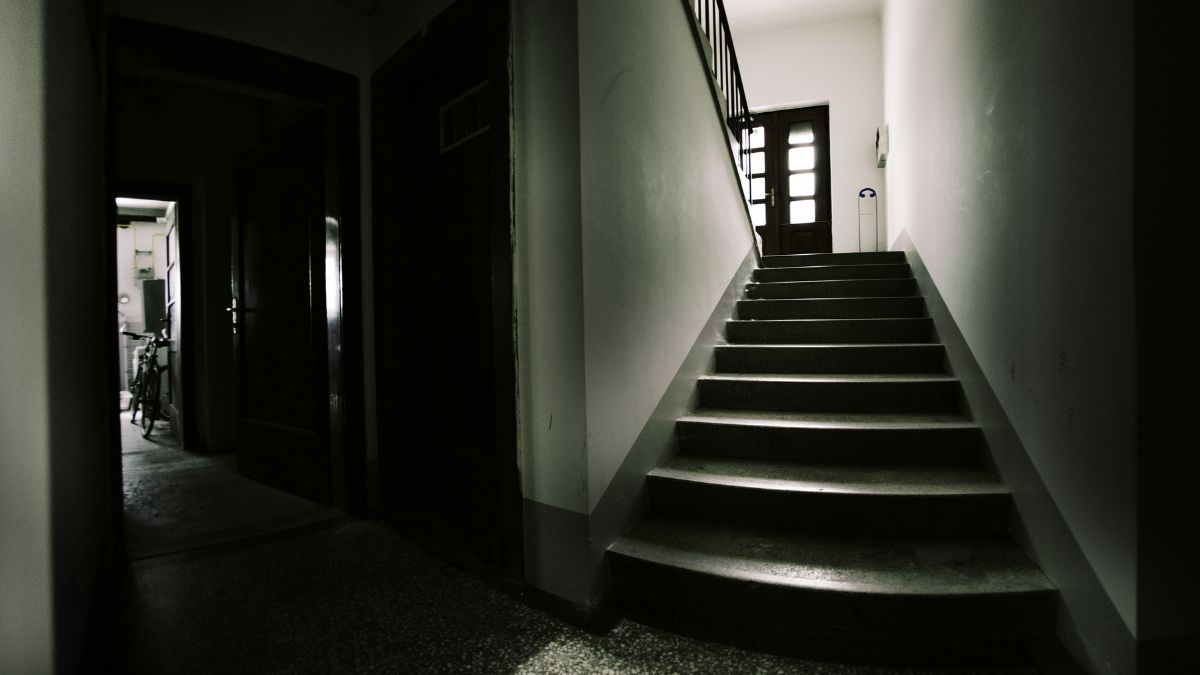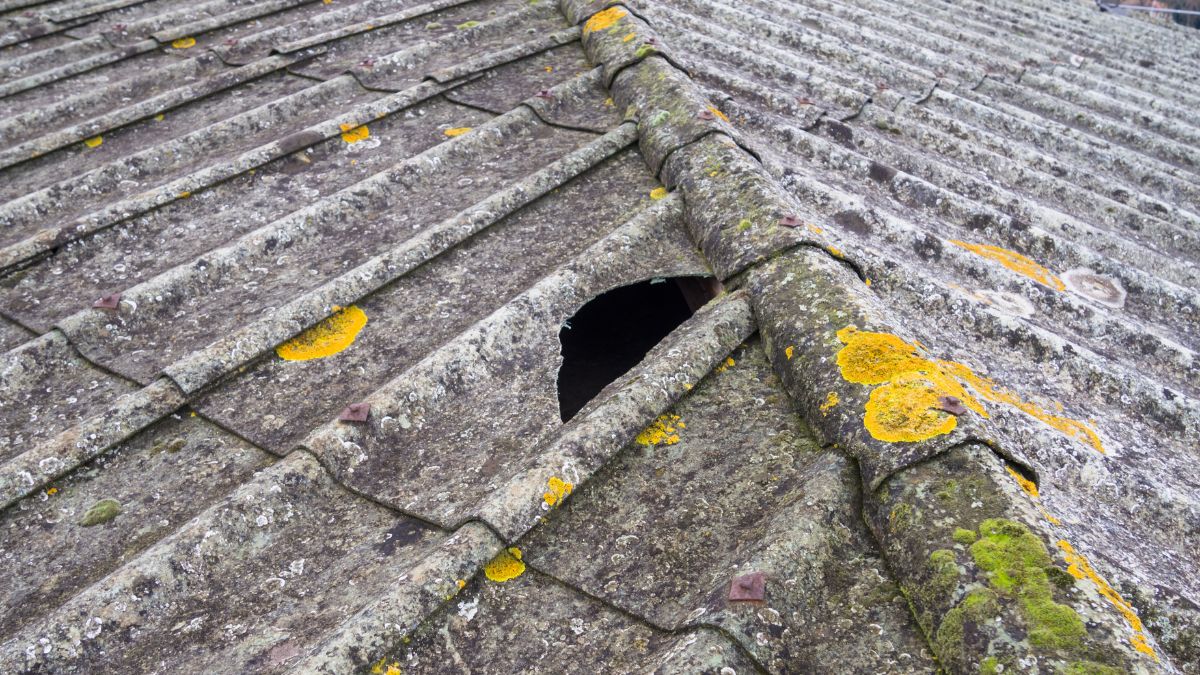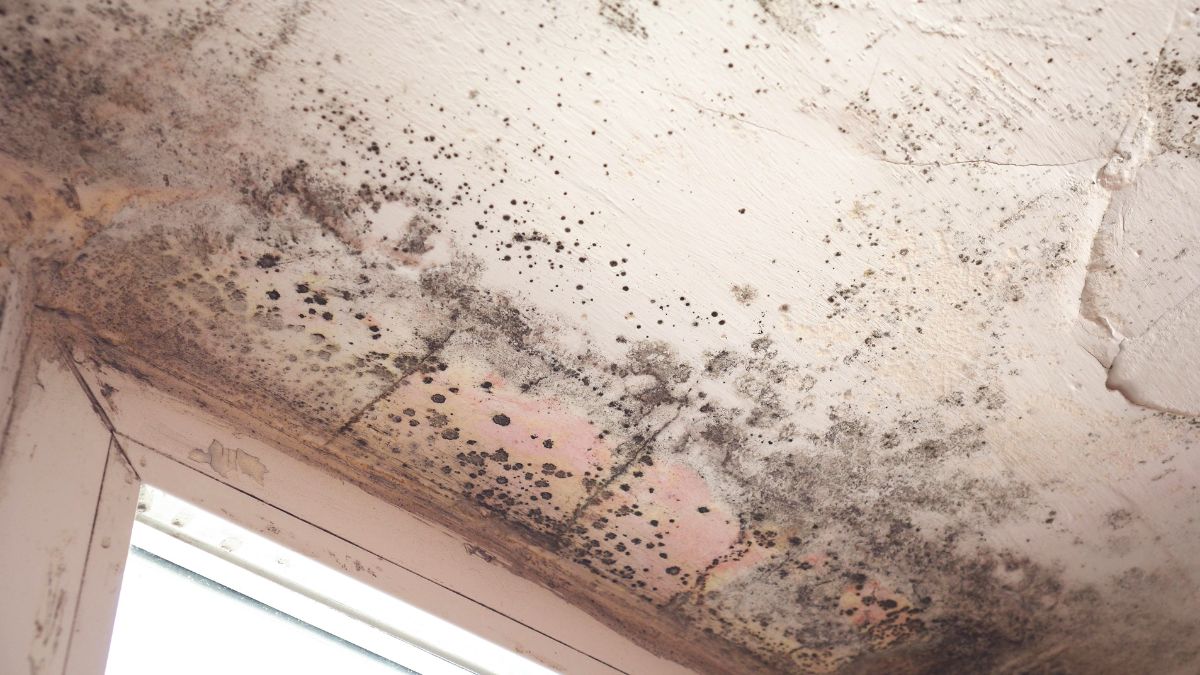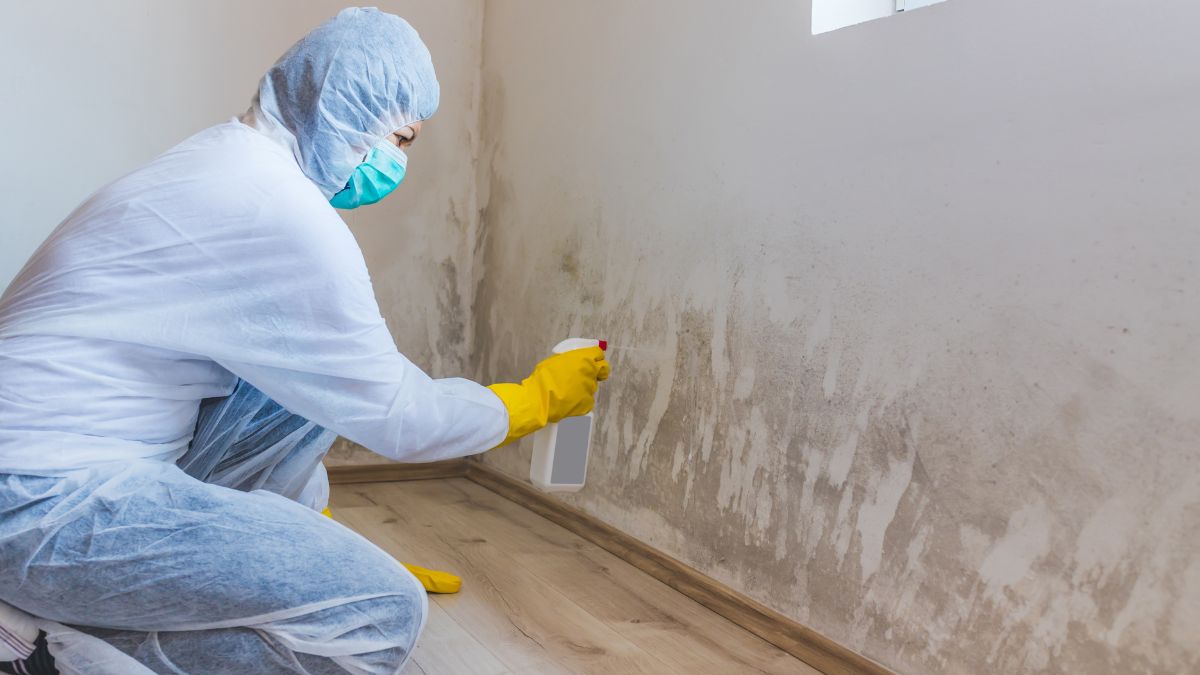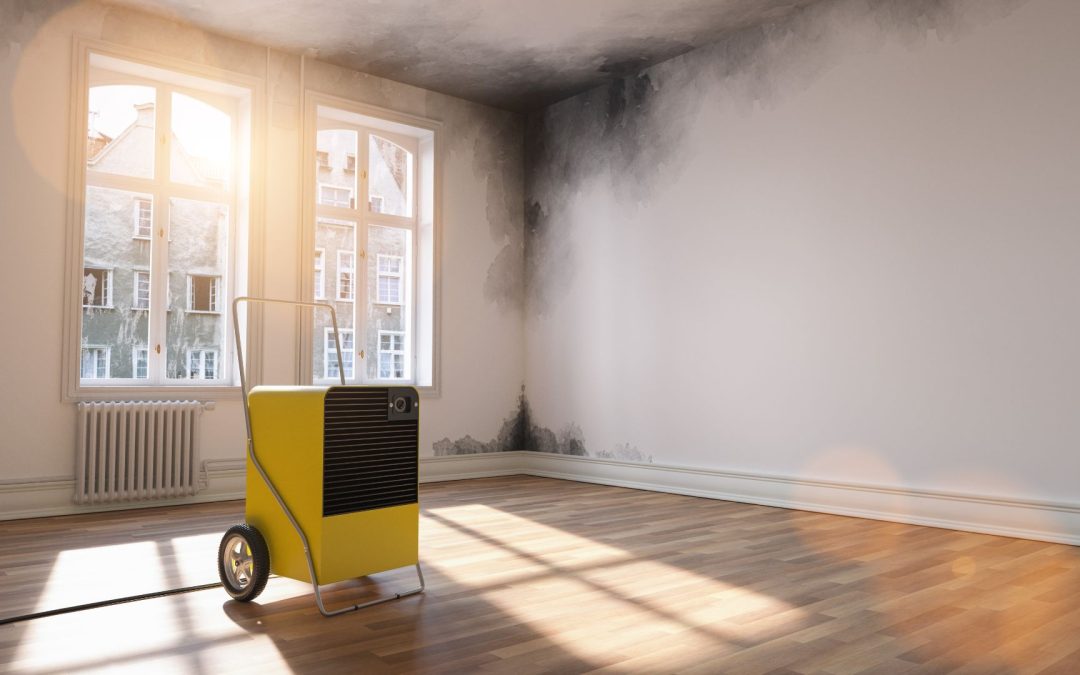
by Mold-B-Gone | Aug 10, 2023 | Health, Killing Mold, Mold Facts
Mold is a prevalent issue in many households. Given the right conditions, unfortunately, mold can spread to other areas of the home. Once the mold spores are carried to the rest of the residence, they begin to grow in places that have damp conditions. The trouble is that it’s not easily detected, so the problem may worsen before it becomes apparent. Mold can grow anywhere, provided the right conditions persist. So, a damp basement can affect the upstairs. You must be vigilant and solve the mold issue while it is still in the basement.
How Mold Travels Upstairs
Mold in the basement can affect the upstairs parts of the house via air ducts. Spores, microscopic seeds, are carried by air currents and can circulate to other areas of the house via the HVAC ducts. It also happens when warm air rises, so they are carried to the upper parts of the house. Spores can also attach themselves to clothing, skin, or shoes. Therefore, traffic in and out of the basement likely carries the spores to other parts of the house. These spores will germinate if they find suitable conditions in the different areas.
Safety Considerations When You Have Mold in the Basement
Considering how quickly mold can spread to other places in the house, you must know about the potential health implications. Mold may cause adverse reactions to people and their pets, including skin rashes, allergic reactions, or other respiratory issues. So, if there is mold in the basement, it would be advisable to have it removed immediately. Most people fear black mold because of the assumption it can cause cancer or likely kill. However, most species of mold are harmful to humans. Unchecked mold growth can also cause damage to the home, as it breaks down drywall and wood.
How to Remove Mold From Your Basement
Mold on basement walls must be preempted before it can spread to other areas of the house. Rather than doing the work yourself, call in mold removal specialists to deal with it. These professionals can identify and correct the source immediately. First, they assess the damage by checking all rooms in the house. Hopefully, if still limited to the basement, they will seal the cracks in the foundation and any holes. If only the mold is removed, but the moisture is ignored, there is a high likelihood it will come back.
Moldy walls, studs, plumbing, and floors are all treated. The HVAC air filters and ducts would have to be replaced and insulated to prevent any future growth. The mold removal specialists can advise on any further action depending on the situation.
Call in the Experts Right Away
Mold cleaning is about prevention, so begin by limiting moisture from the basement. If you have a mold problem and would like to arrange an inspection of your crawlspaces or basement, contact Mold-B-Gone, your mold specialists in Atlanta. Call us today for a consultation and quote.

by Mold-B-Gone | Jul 21, 2023 | Asbestos Removal
When it comes to protecting you and your family, understanding the different dangers in your home is of the utmost importance. That being said, two of the biggest culprits in today’s day and age are mold and asbestos.
Both of these materials can be harmful, if not deadly. But is asbestos mold? No, it’s different. However, understanding the differences between mold vs asbestos is important in protecting you and your loved ones.
Of course, if you see any of the signs or symptoms of mold or asbestos infestations, you should contact a mold removal company right away, such as Mold-B-Gone Remediation. Without further ado, let’s talk about the difference between mold and asbestos.
Asbestos Vs Mold: The Difference
What Is Mold?
Mold is a fungus, it is technically a living organism, this microscopic pest has spores that travel in the air incredibly easily.
Once a few spores of mold take root, they can begin to grow and spread rapidly. In fact, in as little as 48 hours, you can start to have a mold infestation. Signs of mold include black or green streaks for the most part, as well as a dingy smell.
Mold is present in attics, ceilings, bathtubs, and anywhere where moisture or dampness occurs. If left unchecked, mold can continue to grow. Mold can destroy wood, wallpaper, cabinetry, carpeting, and more.
It brings a variety of negatives to it. Not only does it smell and look unsightly, in addition, it can damage your property long-term, and it can even be harmful to your family’s lungs and respiratory system.
Mold is known to cause asthma, coughing, sneezing, and other symptoms. What’s more, there are various types of mold ranging from annoying to downright deadly.
What Is Asbestos?
Asbestos is similar to mold in that it occurs naturally, however it is not something that is organically in a home. It is created when manufacturing building materials. Asbestos is derived from minerals found in certain materials like brakes, vinyl floor tiles, and insulation.
Asbestos is not used as much as it was in the past. Still, if you have an older home or are importing materials that have not been properly evaluated, it could contain asbestos.
Black mold and asbestos both come with health risks. If it is inhaled, the tiny fibers can damage lungs, cause inflammation, and even cause cancer.
Get Mold Removal Today
At Mold-B-Gone Remediation, we pride ourselves on protecting your home, your family, and your belongings with mold removal in Atlanta.
After all, your home is a place of peace and should be your most prized possession. Let’s ensure that you can breathe clean, fresh air and avoid any kind of damage from infestations going forward. Give us a call for a free consultation today.

by Mold-B-Gone | Jul 11, 2023 | Mold Facts
When it comes to your home, there are several hazards that you need to be aware of. One major danger can be mold. In this article, we’ll talk about the answer to “Is mold in the attic dangerous?”
We’ll also discuss how you can ensure to get rid of any mold that might be in your attic or elsewhere in the home.
Where Does Attic Mold Come From?
Mold growth has several causes. Mold can be anywhere in the air because it’s microscopic. Spores can spread quickly. It can come from organic matter outside, such as leaves. From here, once it gets in your attic, it can be hard to get rid of.
Mold can grow on food, cardboard boxes, oxygen, and moisture. Essentially, any other organic materials can be a source of mold if kept too humid.
Most people aren’t in their attics all the time, therefore it may be difficult to get rid of mold before the visible and other noticeable signs start showing up.
In fact, mold can grow in as little as 48 hours. Causes for mold can be condensation, leaks, and poor ventilation.
For instance, if you haven’t replaced your roof and there’s a heavy rainstorm, mold can start growing in the next couple of days. Once mold gets going, it’s very difficult to get rid of. It can cause some major hazards.
Is Mold In The Attic Harmful?
Now let’s answer some common questions about this annoying fungus:
- Is black mold in my attic dangerous?
- Is white mold in the attic dangerous?
- Can attic mold make you sick?
Yes, crawlspace mold makes you sick — as does that found in the attic. But here are some other downsides:
Property Damage
Mold can be incredibly destructive to your property. Depending on the material of your attic, it can wreak havoc.
For instance, if you have a wooden attic, like many homes, the mold will degrade and decompose the wood. Eventually, this can create costly repairs.
That’s not to mention the smells that could arise from the area. Also, it’s very dangerous since the attic supports parts of your roof and other areas of the home. So to recap so far, the answer to “Is attic mold harmful?” is absolutely.
Airborne Illnesses
People who have asthma are at higher risk of being affected by mold. This is particularly true when it’s in your attic. Mold can also cause wheezing, coughing, sneezing, headaches, and other kinds of respiratory issues.
Time And Hassle
If mold grows in your attic, it could ruin the keepsakes that you store up there. It could also be incredibly time-consuming and costly to get rid of.
That’s why it’s important to consistently have a professional mold remediation team inspect the areas of your home. If any issues are found, experts can take care of them.
Get Mold Remediation Today
If you’re looking for the best mold removal company in Atlanta, contact Mold-B-Gone Remediation. We’ll identify the source of the mold, remove it, and ensure that you can get back to living your life without disruption and hazards.
Now you know that the answer to “Is black mold in the attic dangerous?” is yes, so don’t hesitate. Contact us for a consultation today with the best mold specialist in Atlanta.

by Mold-B-Gone | Jun 15, 2023 | Killing Mold, Mold Information
Mold removal mediation is one of the most important services you can have done on your home.
If you need any kind of mold remediation or mold removal, contact the experts at Mold-B-Gone Remediation today. Our technicians will ensure that all of the mold is removed from your property without damaging anything else on your property.
That being said, you may be wondering “Do you have to leave your house during mold remediation?” So let’s discuss that question once and for all. That way you can be as prepared as possible when it comes to making your home clean and safe again.
The Dangers Of Mold
Mold can cause several issues for you and your family. It can cause allergic reactions in you and your pets. It can create respiratory problems and make asthma symptoms worse.
It could even lead to death in the case of black mold, which can be toxic. That’s not to mention headaches, nausea, and other physical discomfort. Furthermore, mold can damage your property — It can completely ruin wallpaper, couches, and other materials.
Mold is truly a pain to get rid of once it grows, so you should always let the professionals handle any kind of mold remediation or removal.
On top of that, if you try to perform remediation yourself, you could end up damaging your property above and beyond where it’s simply infected with the mold.
This is one of the many reasons to hire mold remediation professionals. That being said, let’s talk about mold remediation and especially “Can you live in a house during mold remediation?”
Can I Stay In My Home During Mold Remediation?
If it’s possible, it’s best to leave the home for a few days while the remediation is taking place.
That lets the professionals work with more flexibility. It also can speed up the process since there may be chemicals used to clean up the mold, and that way you don’t have to worry about breathing any of it in for the several hours that it may still be in the air.
Get Mold Remediation Services Today
Contact the mold remediation experts in Atlanta for any kind of mold remediation or mold removal. We’ll diagnose what kind of mold you have and take the necessary steps to ensure that you and your family can breathe clean, fresh air as soon as possible.
It’s time that you feel comfortable and safe in your home once again. Trust the experts to help you remove the mold and answer any questions such as “Can you stay in your house during mold remediation?”

by Mold-B-Gone | May 23, 2023 | Killing Mold, Mold Removal
Mold is a common problem in several areas of the country. Yet, Atlanta’s humidity and heat mean that you may be more likely to suffer from this infestation. Let’s explore whether humidifiers are a viable solution to this pressing problem.
What Is A Dehumidifier?
A dehumidifier can help combat mold growth. Ultimately, dehumidifiers, as the name suggests, pull moisture from the air. This leads to a drier environment within the home.
So to answer the question, “Can a dehumidifier kill mold growth?” is yes and no. Indirectly, it prevents the habitat that mold loves to grow in. That being said, it won’t be enough to get rid of mold if it’s already taken hold. So you should always have professionals come out for mold removal in Atlanta.
How Does Mold Grow?
Aside from understanding “Will a dehumidifier kill mold”, and mites and fleas for that matter, let’s talk about the mechanism that allows mold to grow.
Mold loves moist, dark, damp environments. That’s why sinks, faucets, and other places in your home where there is water make an excellent mold habitat. Additionally, mold grows on paper, fabrics, cardboard, drywall, and paint.
And once it gets hold in your home, it can range from annoying to downright deadly.
How To Get Rid Of Mold
While you could try to install a dehumidifier and use some homemade methods, it’s best to have mold remediation done. Professional mold removal services kill the mold at its source so that it stops spreading.
After all, it’s very contagious, and once spores take hold, they tend to spread to other areas of your house — causing damage and health hazards.
Choosing A Mold Removal Company
When looking for the right removal services, ask them if they have insurance in place. Proper mold removal companies have insurance to guarantee their work for your protection.
Additionally, they should come out for inspection to properly assess the right method to use. And finally, look for a good online rating from other satisfied customers. This lets you know that you’re dealing with high integrity professionals with proven results.
Will Running A Dehumidifier Kill Mold? Summary
Contact Mold-B-Gone and get a free inspection. We’ll assess your property to see where mold is currently and potentially might be growing in the future. Then, we use state-of-the-art techniques and tools to remove the mold once and for all.
You deserve a clean, safe home. So reach out today and protect your property with expert guidance. After all, your house should be your refuge. And you shouldn’t have to ask questions like “Will a dehumidifier kill mold spores” ever again.
